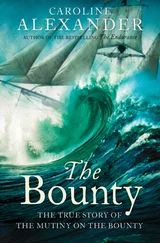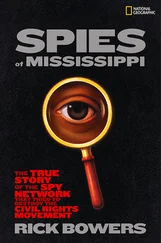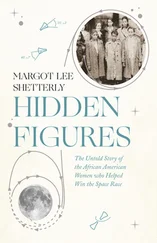John Fow - The True Story of the American Flag
Здесь есть возможность читать онлайн «John Fow - The True Story of the American Flag» — ознакомительный отрывок электронной книги совершенно бесплатно, а после прочтения отрывка купить полную версию. В некоторых случаях можно слушать аудио, скачать через торрент в формате fb2 и присутствует краткое содержание. Жанр: foreign_prose, foreign_antique, на английском языке. Описание произведения, (предисловие) а так же отзывы посетителей доступны на портале библиотеки ЛибКат.
- Название:The True Story of the American Flag
- Автор:
- Жанр:
- Год:неизвестен
- ISBN:нет данных
- Рейтинг книги:4 / 5. Голосов: 1
-
Избранное:Добавить в избранное
- Отзывы:
-
Ваша оценка:
- 80
- 1
- 2
- 3
- 4
- 5
The True Story of the American Flag: краткое содержание, описание и аннотация
Предлагаем к чтению аннотацию, описание, краткое содержание или предисловие (зависит от того, что написал сам автор книги «The True Story of the American Flag»). Если вы не нашли необходимую информацию о книге — напишите в комментариях, мы постараемся отыскать её.
The True Story of the American Flag — читать онлайн ознакомительный отрывок
Ниже представлен текст книги, разбитый по страницам. Система сохранения места последней прочитанной страницы, позволяет с удобством читать онлайн бесплатно книгу «The True Story of the American Flag», без необходимости каждый раз заново искать на чём Вы остановились. Поставьте закладку, и сможете в любой момент перейти на страницу, на которой закончили чтение.
Интервал:
Закладка:
John Henry Fow
The True Story of the American Flag
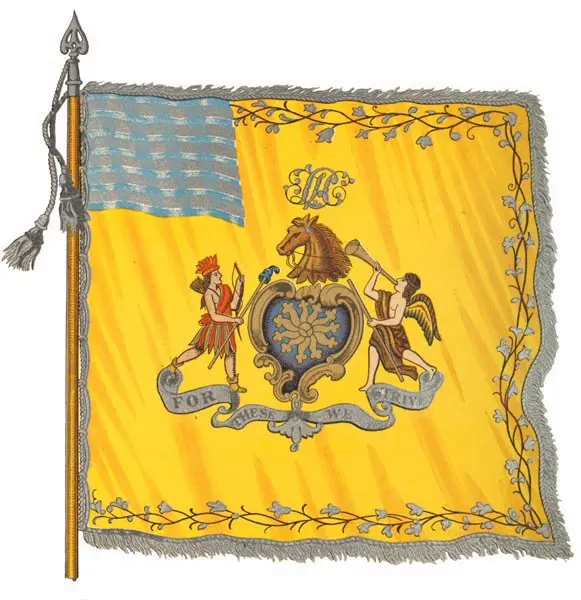
Fig. 8
FLAG CARRIED BY THE FIRST CITY TROOP OF PHILADELPHIA IN ESCORTINGWASHINGTON ACROSS THE JERSEYS ON HIS WAY TOTAKE COMMAND AT CAMBRIDGE
INTRODUCTION
I was induced to make this research by the late William H. Egle, Librarian of the State Library at Harrisburg, whose knowledge of the early history of Pennsylvania was of valuable assistance to me in preparing the data for a history of the country along the Delaware river prior to 1682 (yet unfinished). Mr. Egle agreed with me that the claim of Mr. Canby that Betsy Ross designed and made the first flag was legendary and without that foundation which is so necessary to uphold claims of this character. Statements of such a character, when allowed to go unrefuted, do harm to the history of any people, inasmuch as they encourage others to build “air castles” and purchase old portraits to be palmed off on others as our “grandfather” who “fit” in the Revolution, or our “grandmother” who carried supplies to the troops at Valley Forge.
History is the best incentive to make men love their country; it encourages that patriotism which never falters, even at the cannon’s mouth. The sight of a flag or the music of a band merely enthuses as long as one is in sight or the other can be heard; but history and its knowledge are lasting and a source of pride. So, therefore, let it be true in all its details, no matter who may fall from the high pedestals upon which they have been placed by vain-glorious descendants.
John H. Fow.THE AMERICAN FLAG
“It will probably never be known who designed our Union of Stars, the records of Congress being silent upon the subject, and there being no mention or suggestion of it in any of the voluminous correspondence or diaries of the time, public or private, which have been published.”— Rear-Admiral Preble .
So far as regards the adoption of the combination of stars and stripes, the same assertion can be safely made. As to the origin of each this research, it is hoped, will prove conclusively, first, that colored stripes representing a combination for a common purpose were used nearly two hundred years before the Declaration of Independence; second, that stars were used in the union of a flag in November, 1775, on a flag raised on a Massachusetts privateer commanded by Captain Manley (see Fig. 1 Fig. 1 Fig. 2 Fig. 3 Fig. 4 Fig. 5 Frothingham in his history of the siege of Boston says that there was a flag over Prescott’s redoubt having upon it the words “Come if you dare;” but there is no authority given for the statement. As a matter of fact, it might have been, for at that period flags were used as ensigns, with different sentences upon them, such as “Liberty and Union,” “An Appeal to Heaven,” “Liberty or Death,” “An Appeal to God.” Several such flags were captured by the British and mentioned in the English journals of that period (see Figs. 5
), and that they were also used in the design of the book plate of the Washington family along with three stripes.
There can be no doubt that the stripes were made thirteen as a mere matter of sentiment to represent the colonies engaged in the Revolutionary struggle. As a matter of fact, the number thirteen appeared in a large number of instances during the Revolution, and was apparently used as an object lesson to remind the colonists that they were united in a common cause.
The colors of the stripes have no special meaning or significance, except that which anyone may apply who desires to make use of his imagination, or who may become sentimental upon the subject. Many have written and commented upon it; some have said that the red stripes mean courage, others war, daring, determination, and so on, and that the white stripes mean purity, peace, justice, or equity.
“Thy stars have lit the welkin dome,
And all thy hues were born in heaven.”
As a matter of fact, the idea of stripes in a flag to represent a combination for a common purpose originated in 1582 in the Netherlands, and symbolized the union of the Dutch Republic in its struggles against the power of Philip and the persecutions of Alva.
In a paper read before the New Jersey Historical Society by a Mr. Haven in January, 1872, he suggested “that the combination of our flag, the stars and stripes, were favored as a compliment to Washington, because they were upon the book plate of the General’s family.” He further stated “that the stars on the book plate were of Roman origin,” and in support quoted from Virgil “Redire ad astra,” meaning and inferring that a return to the stars meant a future home of peace and happiness for the human race, and that is what this nation would eventually become. Assertions and statements similar to the above may be quoted by the score, wherein reasons are given based upon theory and imagination as to the origin of the devices which compose our national banner.
The claim that has been made about Betsy Ross, who worked at upholstering and as a seamstress during the Revolution, who is said to have lived in a house either No. 80 or 89 Arch street, Philadelphia, now said to be No. 239 Arch street, as having some time in June, 1776, made and designed the first American flag as we now worship it, cannot be corroborated by historical research.
The claim is one of that legendary type that the Rabbins of old handed down for centuries, and which were believed to be true, until modern investigation proved their falsity, or like the imagination of artists who attempt to paint historical events without consulting details, historical, and geographical. The two most notorious in our history are Leutze’s painting of Washington crossing the Delaware, and Benjamin West’s painting of William Penn treating with the Indians. As to the first, I write from authority, having been designated to represent the Legislature of Pennsylvania as one of a committee of three to act in conjunction with the Trenton Battle Monument Committee to select an historical subject for the medallion to be placed upon one of the four sides of a monument, erected at Trenton, to represent Pennsylvania’s part in that memorable event, we chose as the subject “Washington Crossing the Delaware,” and the result of our labor, and investigation in conjunction with the Monument Committee can be seen to-day on the west side of the monument. The bronze tablet placed there by the Commonwealth of Pennsylvania truthfully delineates that notable event. The late General Stryker, of New Jersey, aided us, and furnished us books, and documents to obtain part of the data. The tablet represents a small rowboat, with General Knox sitting in the bow of the boat, and Washington in the stern, the man rowing the boat was a Mr. Cadwalader. He lived at McKonkey’s Ferry, on the Pennsylvania side of the river. Leutze in his painting has Washington standing alongside of a horse in a large scow, such as were used in those days on the upper Delaware to take produce to the Philadelphia markets. A number of others are in the same boat, one holding aloft a flag containing a blue union with thirteen white stars—a flag that did not come into existence until six months after the battle was fought.
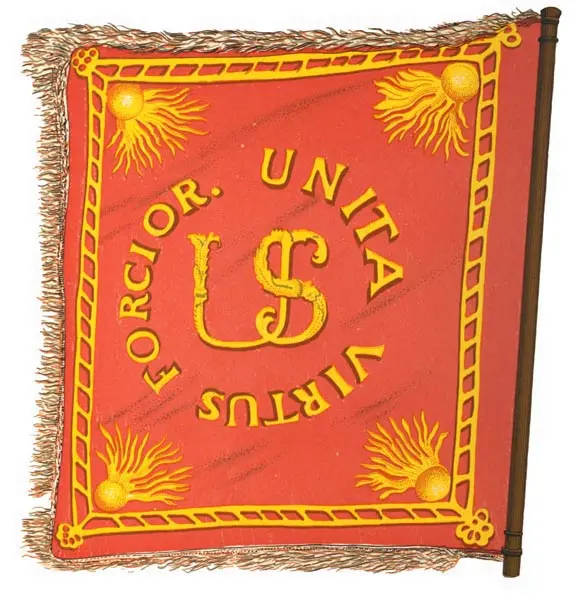
FLAG CARRIED IN THE REVOLUTION BY COUNT PULASKI’S LEGION
As to West’s picture, one need only look at it, and then read the facts as related in any history of Pennsylvania, and it will be found how historically untrue it is. One instance alone would be sufficient; that is, in the painting, the vessel in which Penn came over is anchored out in the river, when, as a matter of fact, she never came up to Philadelphia. She was quarantined below Chester because of the smallpox, and Penn was rowed up the river from Chester in a small boat, and landed near the residence of the Swensons, two Swedes, who lived at Wicaco, and from whom he bought the land comprising old Philadelphia. Again, the elm tree is in full leaf, yet the “pow-wow” that Penn held with the Indians took place in November, and elm trees do not have leaves on them in this latitude in November. But why digress from the subject about which I started to write, merely to show that artists and those seeking for family distinction are not to be relied upon as truthful delineators of history.
Читать дальшеИнтервал:
Закладка:
Похожие книги на «The True Story of the American Flag»
Представляем Вашему вниманию похожие книги на «The True Story of the American Flag» списком для выбора. Мы отобрали схожую по названию и смыслу литературу в надежде предоставить читателям больше вариантов отыскать новые, интересные, ещё непрочитанные произведения.
Обсуждение, отзывы о книге «The True Story of the American Flag» и просто собственные мнения читателей. Оставьте ваши комментарии, напишите, что Вы думаете о произведении, его смысле или главных героях. Укажите что конкретно понравилось, а что нет, и почему Вы так считаете.


